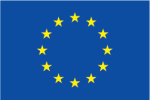Céline Schöpfer
02 March 2020
No Comments
So… I am not the only one?
When developing tools to teach integrity to young researchers, there are many examples of misconduct that one can use. Articles that have been withdrawn post-publication are now publicly available, including the name of the author (for example, on Retraction Watch). Therefore, the “list” of behaviours to be avoided has been made very clear, and it seems important to make students aware of this type of unacceptable behaviour. The now-classic example of Tuskegee is one such example. In this case, a team of American doctors conducted clinical research on subjects in order to study the effects of syphilis when left untreated. From 1932, 400 African American men took part in this study without being fully informed, as they were participating under the guise of receiving medical treatment financed by the American government. This study continued until 1972 (even though penicillin had proved its effectiveness in treating the disease in the 1940s…), when the Washington Post publicized the case. While not all cases of research misconduct are this serious, this type of example has the advantage of shocking us and making us question the ethics of our own behaviour in research.
When developing tools to teach integrity to young researchers, there are many examples of misconduct that one can use.
Nevertheless, beware of the double effect…
Although using examples of bad practice is necessary, it can come as a double-edged sword. Psychologist David Halpern explains in his book Inside The Nudge Unit that it is possible to use one’s tendency to submit to the social norm in order to induce behaviour in others – this is how nudging works (for more information about nudging toward integrity see here). However, Halpern also warns against this type of nudging on the basis of observations of the influence psychologist Robert Cialdini: “He argued that too often, in their haste to impress upon colleagues or the public the gravity of a particular issue, policymakers would inadvertently reinforce the very behaviour they were trying to discourage.” Halpern goes on to cite examples: an information campaign on stabbings can inadvertently suggest that most young people carry a knife with them; a series of posters aimed at reducing tax cheating may indirectly convey information that many people, in the end, behave in this way, which can generate a “so … I am not the only one?” effect. This is what Cialdini calls “the big mistake.”
Although using examples of bad practice is necessary, it can come as a double-edged sword.
The misunderstanding that we generally have of statistics might amplify this error. While our brain is used to thinking in terms of association, causality or metaphors, statistics assumes that we manage to take into account several elements, which is not a very intuitive way of thinking. Indeed, this is seen in results from a study by Slovic, Lichtenstein and Fischhoff, that Kahneman reported in his book Thinking, Fast and Slow. These researchers conducted a study on public perceptions of risk, where they asked participants to rate the most common cause of death between two propositions. The data show that, generally, we are relatively bad at producing statistical estimates: 80% of the study participants felt that accidental deaths were more likely than the stroke, while strokes are actually a leading cause of death by almost twice as much of all accidents combined. In the same vein, they estimated that death by illness and death by accident were equal in their likelihood, while death by disease is actually 18 times more likely than accidental death. Participants also believed that death from lightning was more likely than from botulism. Yet death by botulism is 52 times more common. Finally, participants considered tornadoes more deadly than asthma, while in fact asthma causes 20 times more deaths.
Statistics assumes that we manage to take into account several elements, which is not a very intuitive way of thinking.
In those cases, the media also has a role to play, as telling a sensational story is more likely to attract attention from the public, which is why the news has more interest in reporting on tornadoes than asthma. The same goes for ethical conduct: the press will report cases of fraud or abuse rather than commendable behaviour. This is why, in the INTEGRITY project, we will highlight the remarkable behaviour of some great researchers, using vignettes or videos. Some exemplary researchers will give testimonies that explain the benefits of the honest choices they have made during their careers, with the aim of counteracting the trend of showing only dishonourable behaviour in research.
Recent Posts
- New INTEGRITY study uncovers widespread unethical practice for assigning authorships
- Conflict of interest in research: what is it and why it matters?
- Integrity Games: Empowering students with a gamified learning tool.
- Bad news for reproducibility in Cancer biology.
- Designing a MOOC aimed to empower.
This project received funding from the European Union’s Horizon 2020 research and innovation programme under Grant Agreement No 824586. The European Commission’s support for the production of this material does not constitute an endorsement of the contents, which reflect the views only of the authors, and the Commission cannot be held responsible for any use which may be made of the information contained therein.


Leave a Reply